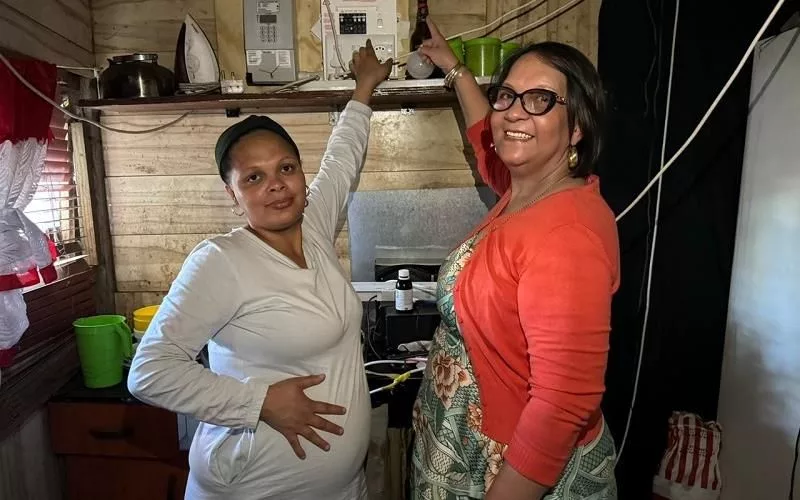Kensington, a suburban locality in Cape Town, has undergone an electrification project that has linked homes to the grid, providing improved living conditions, security, and relief from the uncertain reliance on exposed fires. The city has invested R23 million in the project, allowing roughly 2,440 households to escape from the confining darkness. This initiative has become a precursor to improved living conditions, security, and a much-desired relief from the uncertain reliance on exposed fires.
What is the electrification project in Kensington?
The electrification project in Kensington links homes to the grid, providing improved living conditions, security, and relief from the uncertain reliance on exposed fires. The initiative has become a precursor to improved living conditions, security, and a much-desired relief from the uncertain reliance on exposed fires. The City has invested R23 million in the project, allowing roughly 2,440 households to escape from the confining darkness.
A New Era Dawns in Kensington
Situated in the heart of the throbbing city, Kensington, a suburban locality, was once familiar with the cloak of darkness. Its inhabitants, tucked comfortably along Sixth Avenue, had come to terms with an existence steeped in obscurity, their dwellings remaining off the electric grid’s touch. However, this tale began to shift on November 14th, 2023, sparking an evolution in the community’s life. The electrification project, a ray of progress and optimism, commenced, linking homes to the grid, breathing life into inert wires, and turning the lights on.
Electrification: A Catalyst for Change
This revolutionary initiative has become a precursor to improved living conditions, security, and a much-desired relief from the uncertain reliance on exposed fires. The introduction of electricity heralded security and happiness as households relished the comfort of urban services. The fast-approaching festive season turned even more radiant, its festivities brimming with light and energy. Councillor Beverley van Reenen, the city’s Mayoral Committee Member for Energy, encapsulated this sentiment best when she communicated her emotions at the event.
“Feeling ecstatic,” exclaimed Councillor van Reenen, her words alive with anticipation. “Families in this community can now enjoy a greater sense of security with the basic electricity services that the city offers. It’s hugely significant to witness this becoming a reality.”
A Commitment to Progress
This electrification venture is a testament to the City’s dedication to its inhabitants, reflecting a promise to illuminate every home across the urban expanse. The preceding fiscal year saw a hefty investment of R23 million, allowing roughly 2,440 households to escape from the confining darkness. The city has pledged to persist in its endeavors, pouring resources into infrastructure and chasing progress. The objective is not solely to simplify and secure lives but to pave the way for the newer generation to thrive.
The City’s focus on extending electrical connectivity to living spaces includes formal subsidized accommodation, informal settlements, infills, and backyarder connections. Almost all aged informal settlements within the city limits, situated on city-owned land and in city-serviced areas, have been electrified, subject to feasibility.
A Call for Vigilance
In the midst of the celebratory ambiance, a poignant reminder is presented to the inhabitants about safeguarding this newfound asset. The City urges residents to report any harm to the municipal electrical framework. Alerts can be sent via SMS to 31220 or emailed to power@capetown.gov.za. An anonymous reporting system is in place for residents privy to unlawful activities such as vandalism or unauthorized power connections. Exclusive toll-free numbers are operational for residents to report emergencies from mobile phones or landlines.
As Kensington’s homes bask in the fresh light, the City maintains its unwavering commitment. This electrification project is not just about delivering fundamental amenities but also about nurturing a feeling of security and sparking opportunities for development. As dwellings start to radiate in the gentle buzz of electricity, Kensington’s narrative embarks on a fresh chapter, stepping from the shadows into the light.
1. What is the electrification project in Kensington?
The electrification project in Kensington links homes to the grid, providing improved living conditions, security, and relief from the uncertain reliance on exposed fires. The City has invested R23 million in the project, allowing roughly 2,440 households to escape from the confining darkness.
2. When did the electrification project in Kensington commence?
The electrification project in Kensington commenced on November 14th, 2023.
3. How has the electrification project improved living conditions in Kensington?
The electrification project in Kensington has provided improved living conditions, security, and relief from the uncertain reliance on exposed fires. The introduction of electricity heralded security and happiness as households relished the comfort of urban services.
4. How has the City invested in the electrification project in Kensington?
The City has invested R23 million in the electrification project in Kensington, allowing roughly 2,440 households to escape from the confining darkness.
5. What does the City’s commitment to progress entail in terms of extending electrical connectivity to living spaces?
The City’s focus on extending electrical connectivity to living spaces includes formal subsidized accommodation, informal settlements, infills, and backyarder connections. Almost all aged informal settlements within the city limits, situated on city-owned land and in city-serviced areas, have been electrified, subject to feasibility.
6. What call for vigilance has the City presented to the inhabitants of Kensington?
The City urges residents to report any harm to the municipal electrical framework. Alerts can be sent via SMS or email, and an anonymous reporting system is in place for residents privy to unlawful activities such as vandalism or unauthorized power connections. Exclusive toll-free numbers are operational for residents to report emergencies from mobile phones or landlines.








